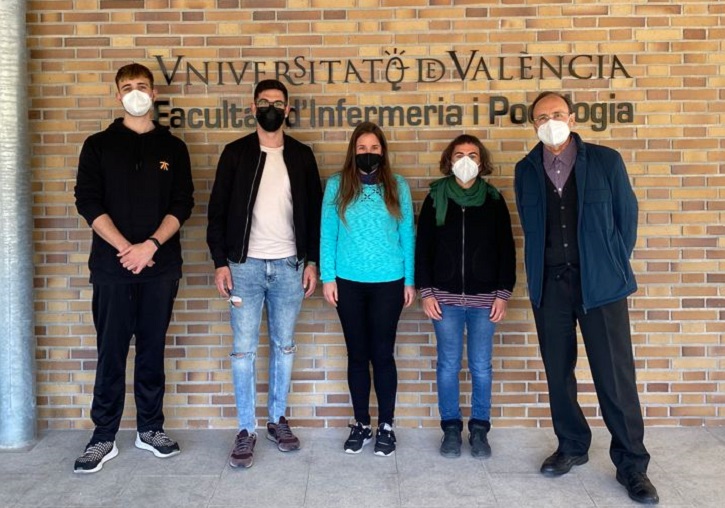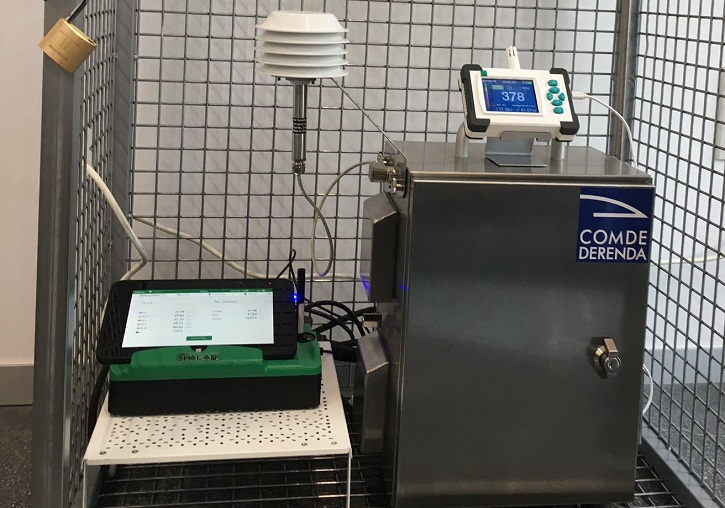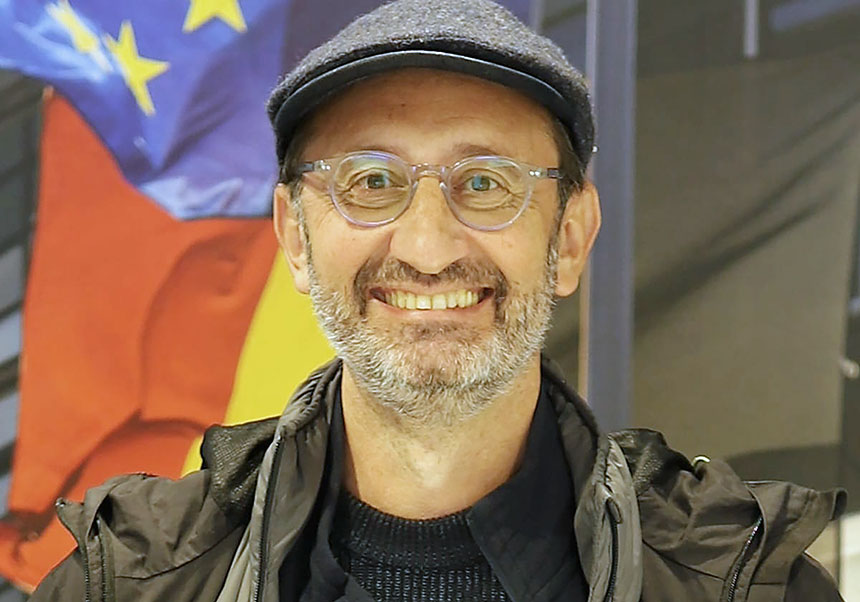The University of Valencia installs in interior spaces of the Faculty of Nursing and Chiropody air sensors that detect SARS-CoV-2
- Scientific Culture and Innovation Unit
- March 29th, 2021
A multidisciplinary team of specialists in environmental epidemiology, air quality and microbiology, formed by the University of Valencia (UV), the Jaume I Univertisy of Castellón (UJI) and the Miguel Hernández University of Elche, has launched a project to measure SARS COV-2 residues in aerosols indoors. The sensors are being installed today, Monday 29, in the new building of the UV Faculty of Nursing and Chiropody. Its aim is to assess whether the detection of virus genetic load in these aerosols could be a useful tool as an alert sentinel for upcoming COVID-19 episodes.

In turn, this project aims to evaluate the effectiveness of health measures to prevent infections in force in the Valencian Community applied to indoor environments of public centres and recommend modifications in case of deficiencies detected.
The project Detection of SARS-CoV-2 in atmospheric aerosol samples is led at the University of Valencia by the professor of the Department of Nursing Ana Esplugues. The equipment will be placed in other university spaces such as libraries, cafeterias and in the facilities of Rector Peset University Residence, as well as places outside the UV such as the underground, nursing homes, schools, institutes and health centres.
The project, led by the researcher of the Jaume I University of Castellón Juana María Delgado-Saborit, has as main objective to evaluate the effectiveness of the preventive sanitary measures of transmission of the SARS-CoV-2 currently in force in interior spaces of public use, such as teaching centres, care centres for the elderly and health centres. Also, by monitoring the genetic load of SARS-CoV-2 in aerosols measured at a Metrovalencia reference station, it is proposed to evaluate the feasibility of these measures in indoor environments as a tool for monitoring and alerting future COVID-19 outbreaks.
“It may happen that there is now a significant volume of asymptomatic people who are not being counted because they do not go to health centres, but we could detect the genetic load of these people through aerosols. That is why the idea is that these projects serve as sentinels until the pandemic is controlled”, explains Ana Esplugues.
The sensors in open spaces
The air intake stations are already installed in various outdoor areas of the Community, such as the Town Hall Squareof Valencia and the Peixateriasquare of Castellón. The intention is for them to be working for nine months to obtain samples of traces of SARS-CoV-2 virus, causing COVID-19, in the air and thus analyse them in the laboratory through a process similar to that of the PCR.
Esplugues explained that it is not yet possible to know if there are differences between the results analysed in the indoor and outdoor spaces, as they are still in the sample collection phase. However, “indoor values may be higher, if we find anything, because now we have to keep in mind that there are people who are already immune and will contribute a negligible or reduced viral load to the environment. However, not finding anything would be good news, because it would mean that protection measures are being effective”, says the expert.
The Valencian Government and the BBVA Foundation
The outdoor collectors project has been funded by the BBVA Foundation, which has awarded grants to twenty scientific researches on COVID-19. For its part, the Department of Innovation, Universities, Science and Digital Society of the Valencian Government has funded the project for the collection and analysis of samples of meters in indoor spaces.
In the case of the Valencian Government, it is a grant of direct subsidy of an exceptional nature in Valencian research of excellence for the anticipation and adaptation to situations arising from viruses.
Photos captions:
- (From left to right) Álex Navarro, Carlos Alfaro, Marisa Estarlich, Ana Esplugues i Ferran Ballester, research team of the project of the University of Valencia.
- Detail of the air collectors that are installed today in the new building of the Faculty of Nursing and Chiropody.
File in: Investigació a la UV , Facultat d'Infermeria i Podologia , Producció científica , Recerca, innovació i transferència , Difusió i comunicació científica , Internacionalització recerca



















